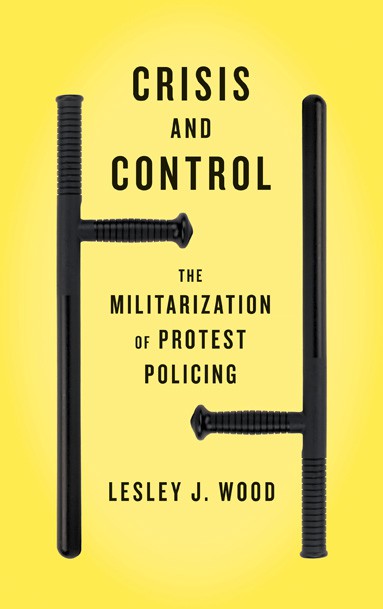It’s hard not to admire Lesley J. Wood. She is an associate professor of sociology at York University, an activist in the anti-poverty and global justice movements and a thoughtful writer.
For instance, instead of dismissing the sometimes brutal behaviours of enforcement officers during the G20 summit with an aggrieved insult or a rude gesture and letting it go at that, she put herself in their shoes, imagining herself “a police commander whose job and legitimacy depended on effectively maintaining the status quo.”
Why? Wood wanted to get beyond simplistic explanations that posit police as demons in order to build the capacity of movements and resist state repression and corporate domination.
The result of this act of empathy is Crisis and Control: The Militarization of Protest Policing, an empirical study of the changes in police organizations, their decision-making procedures and the forces that have influenced them since neoliberal transformation began during the 1980s and accelerated during the 1990s due to free trade agreements and economic deregulation.
Wood considers macro-influences, such as the police as an institution tied to the nation-state and to capitalist relationships, and micro-contexts, such as the practices, organizations and discourses within police culture.
Although using various sources, intricate methodologies and interpretive lenses, she manages to wear her expertise lightly, making the book highly readable while still being full of facts, statistics and comparative analyses. The arguments are complex, but the subject matter is clear and organized.
The discussion about the diffusion and uptake of particular tactics within various police forces in four cities, two Canadian and two American, is a case in point. As is the section on tactics police use, such as less-lethal weapons, barricading strategies, infiltration and media spin.
In discussing this repertoire of repression, Wood notes that they are more frequently used against protesters who are designated ‘uncooperative’ — a label more often applied to protesters from poor or racially marginalized communities, ideologically oriented protesters and youthful protesters.
Protest, we learn, when it targets critical infrastructure, is much more likely to be evaluated as extremism.
Crisis and Control was published in May 2014. It’s now March 2015. Bill C-51, the “anti-terror law,” has passed second reading in the House of Commons.
Bill C-51 promises to grant even more power to police and intelligence agencies. The wording of the Criminal Code of Canada will not change with the passing of Bill C-51, but the evidentiary threshold required for preventative arrests will be lowered.
In light of the militarization of protest policing that has occurred over the past 20 years and given the overly broad definition of terrorism in the Code, Wood is deeply concerned about the passing of the Bill:
“Interference with or disruption of essential services for political objectives is considered terrorism. This seems to include as terrorism such categories of protest as road blockades, the disruption of pipeline construction or mining, or even a strike by public sector workers. Bill C-51 further criminalizes such activities and even the promotion of such activities. What we’re seeing is a dramatic crackdown on dissent and even free speech. I continue to hope that people understand that expanding the power of intelligence and police authorities … is a dangerous idea,” says Wood in an email to rabble February 24, 2015.
The passing of Bill C-51 would answer one of the central questions Wood poses in Crisis and Control: “Will protest policing strategies continue to militarize and attempt to pre-empt and contain dissent?”
Unfortunately, policing is likely to become more repressive in the foreseeable future. Still, all is not lost.
By understanding the dynamics behind protest policing and the widespread criminalization of dissent (and now, as a result of Bill C-51, its conflation with terrorism), activists can be more strategic in their attempts to challenge the legitimacy of those dynamics and that criminalization..
Crisis and Control shows its readers that if we want a social system that ensures equity and justice are valued, we must demilitarize the relationship between those who see protest as good for democracy and those who seek to repress them.
Sarah Hipworth is co-editor of the forthcoming, Let Them Stay, a book about U.S. War Resisters in Canada since 2004. This is her first review for rabble.



